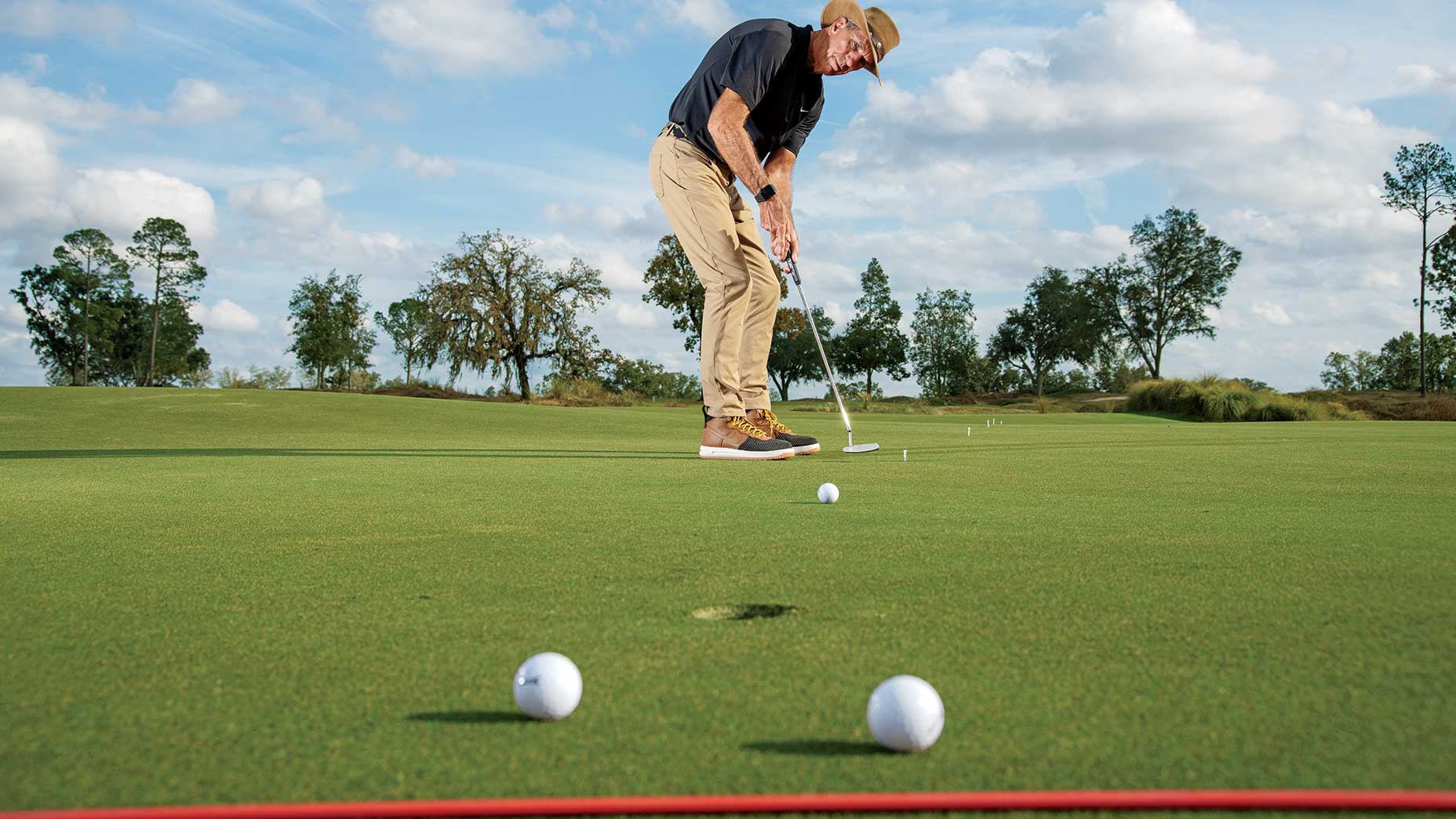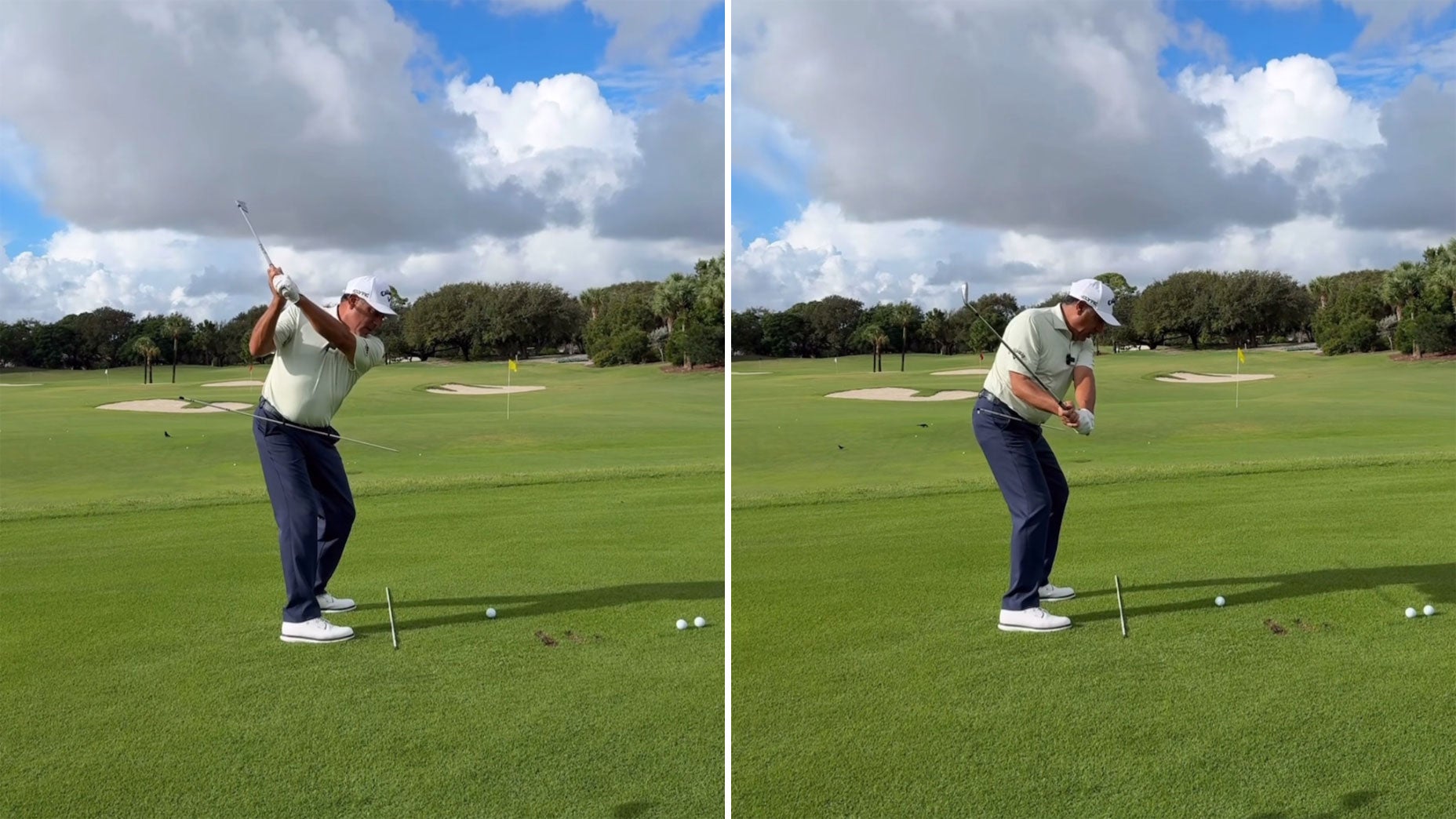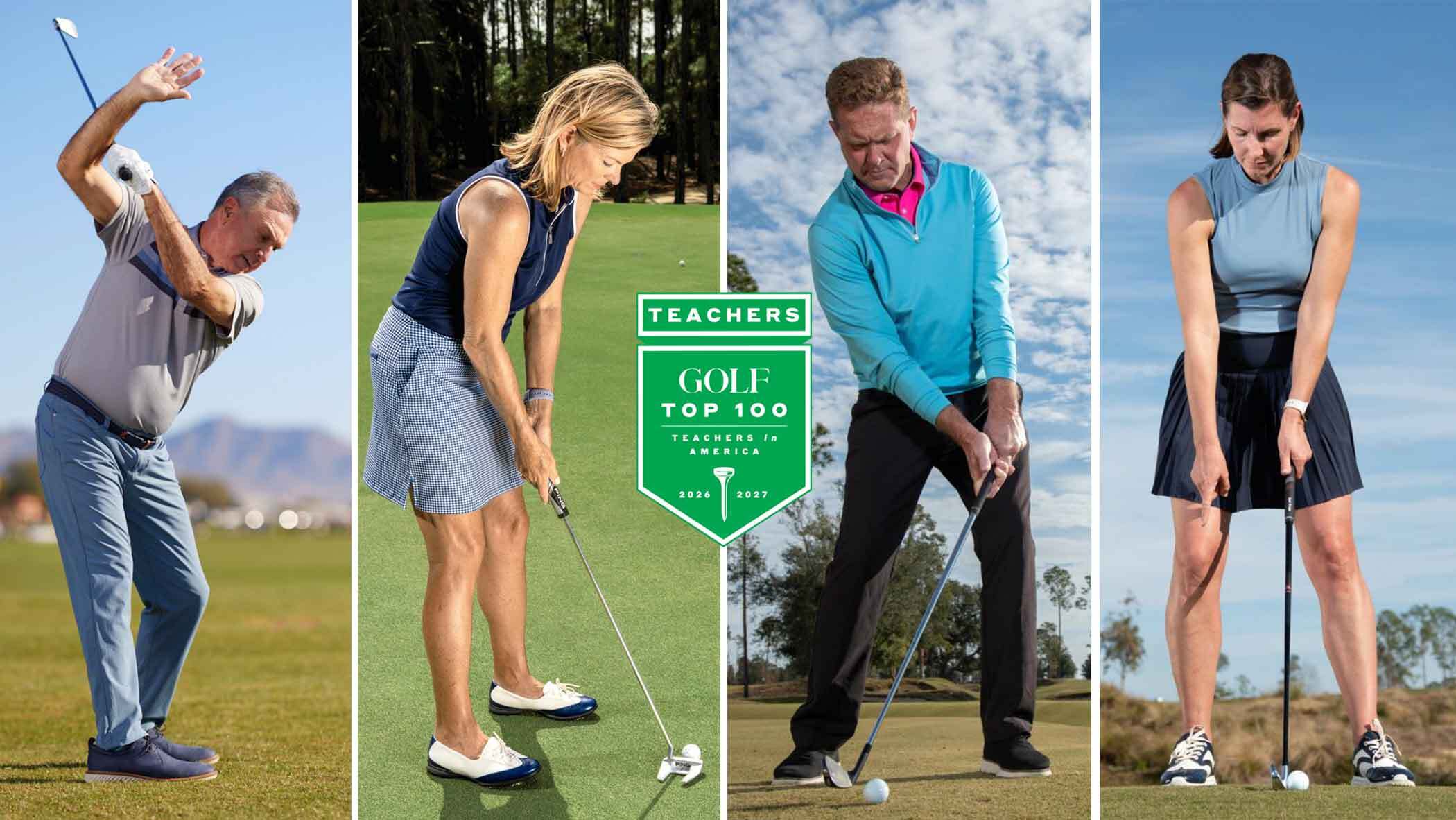By definition, a chip is a back-and-through stroke that results in the ball rolling more than it carries. It’s a simple movement and also a forgiving shot choice relative to a high pitch or flop shot, and therefore one you should use frequently. The key: making clean, crisp contact and having control over your distance. Here’s how to clip your chips like a pro.
1. Grip low
Chips should be accurate in terms of both distance and direction. As a general rule, grip down to shorten up your club, roughly to the length of your putter. Because a chip is a stroke motion like putting, gripping down to putter length will make the motion feel more familiar.
2. Narrow stance
Narrowing your stance will limit your mobility and help you to minimize moving parts. Keeping your feet close together — approximately one clubhead-width apart — also will help you keep your weight forward, promoting better accuracy and distance control.
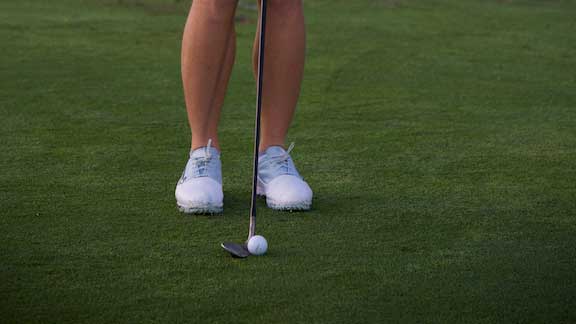
3. Lean proportionally
When you lean your body and the club toward the target, be sure you’re leaning them at the same degree. As you lean forward and your lead shoulder drops, the butt of the club, which started in line with the center of your body, should remain in line with your center line that has naturally shifted target side.
The golf mistake Lee Trevino sees most often (plus 5 other quick Trevino takes!)By: Art Stricklin
4. Hit the ground
To make solid contact, avoid a scooping motion and instead clip the ground just after impact. This will ensure that you catch the sweet spot of your clubface so the ball gets airborne. (While your ball will still roll more than it carries, it should have some lift, especially if you have a few yards of rough or longer grass to carry.) When you make your back stroke, your trail elbow will naturally fold. When you make your forward stroke, straighten this trail elbow so that your club clips the turf. Solid contact will produce predictable flight-to-roll ratios.
5. Feel the clubhead
Tension in your arms and hands is a chip-killer! Relax your hands so you can feel the weight of the clubhead and let gravity help you to swing the clubhead to the ground.
6. Same stroke, different clubs
When you’re consistently making solid contact, controlling distance is the next step to true chipping success and lowering your scores. One of the most reliable ways to control distance is to identify your most comfortable stroke length and then just repeat it with different clubs. Lesser lofted clubs (like, say, a 7- or 8-iron) will fly lower and roll farther, while higher lofted clubs (i.e., PW or SW) fly higher and roll shorter. To perfect your control from various distances, experiment with keeping the same stroke and simply swapping out clubs.
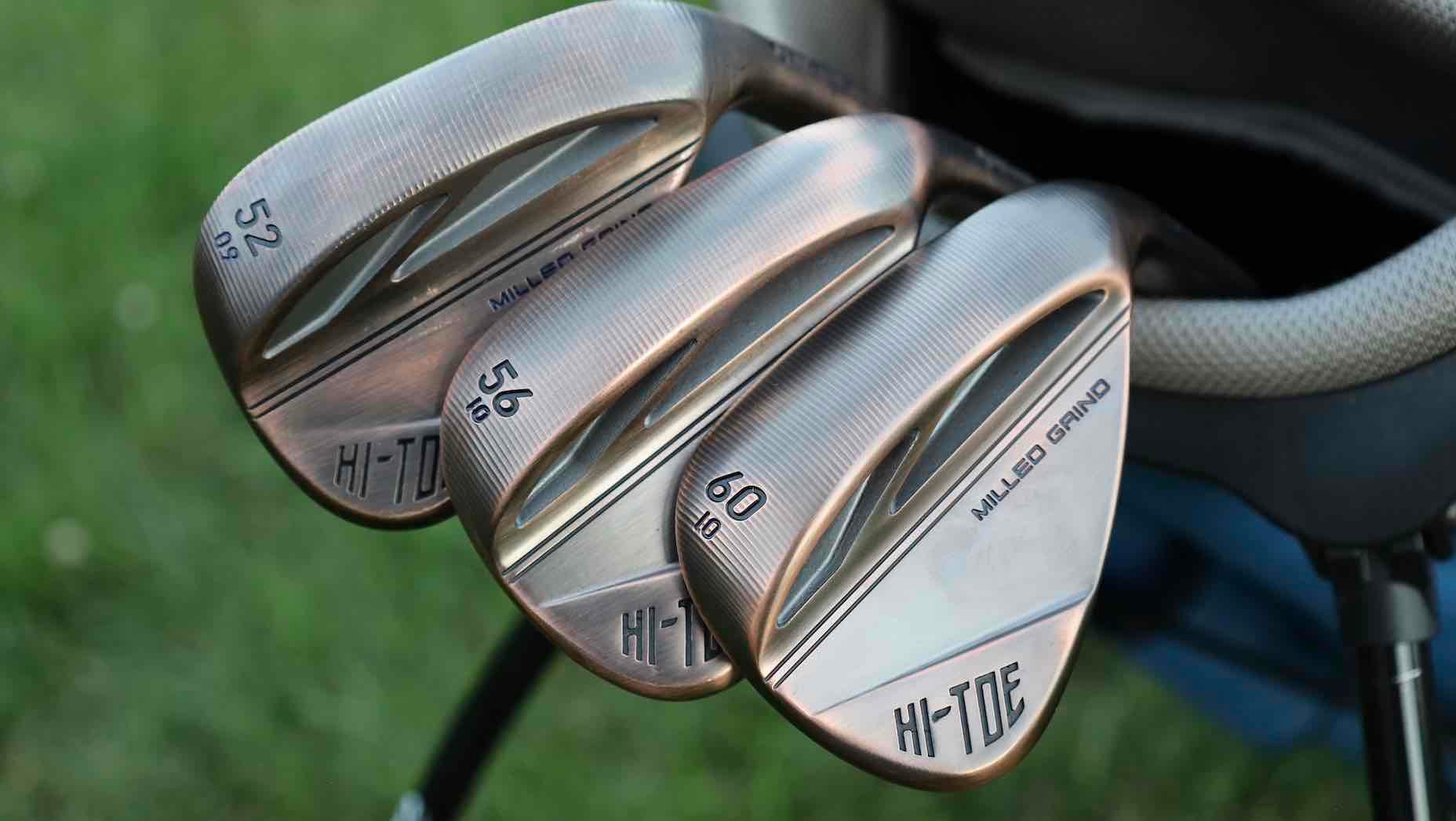
7. Good rhythm
Your stroke should be one smooth continuous motion. If your setup is solid and you simply swing your arms, the ball should just “get in the way” of your clubface as you brush the grass. Don’t react to the ball; keep the club moving and brush the grass. You can improve your rhythm by practicing without a ball. Make continuous strokes back and through in which you do not brush the grass. When you keep the club moving, it naturally will improve your rhythm, contact and flight-to-roll ratios.
8. About those ratios!
Different clubs have different flight-to-roll ratios. Your pitching wedge, for example, will be approximately one-third carry and two-thirds roll, while your 8-iron might produce approximately one-fifth carry and four-fifths roll. Knowing these ratios for each club will help you to make the right length backstroke.
9. Slight ball position changes
Proper ball position for a chip is middle of your stance, especially with the short grass around many of the greens these days. If you want more roll, you can decrease your club’s effective loft by moving your ball back slightly toward your right foot. I’m reluctant to move the ball too far back because excessive shaft lean can cause the club to dig too much. When you move back your ball position, do so in small increments.
10. How to hone feel
Feel comes with practice and repetition. Once you’re making consistently solid contact, spend time on the practice green learning how small adjustments in stroke length, or swapping out clubs, can lead to better accuracy. Improved distance control will not only lower your scores but also take pressure off of your approach shots and putting. Because chipping is a shorter motion that does not require speed or strength, it is a skill that everyone can — and should! — master.







